Coventry Boy Statue
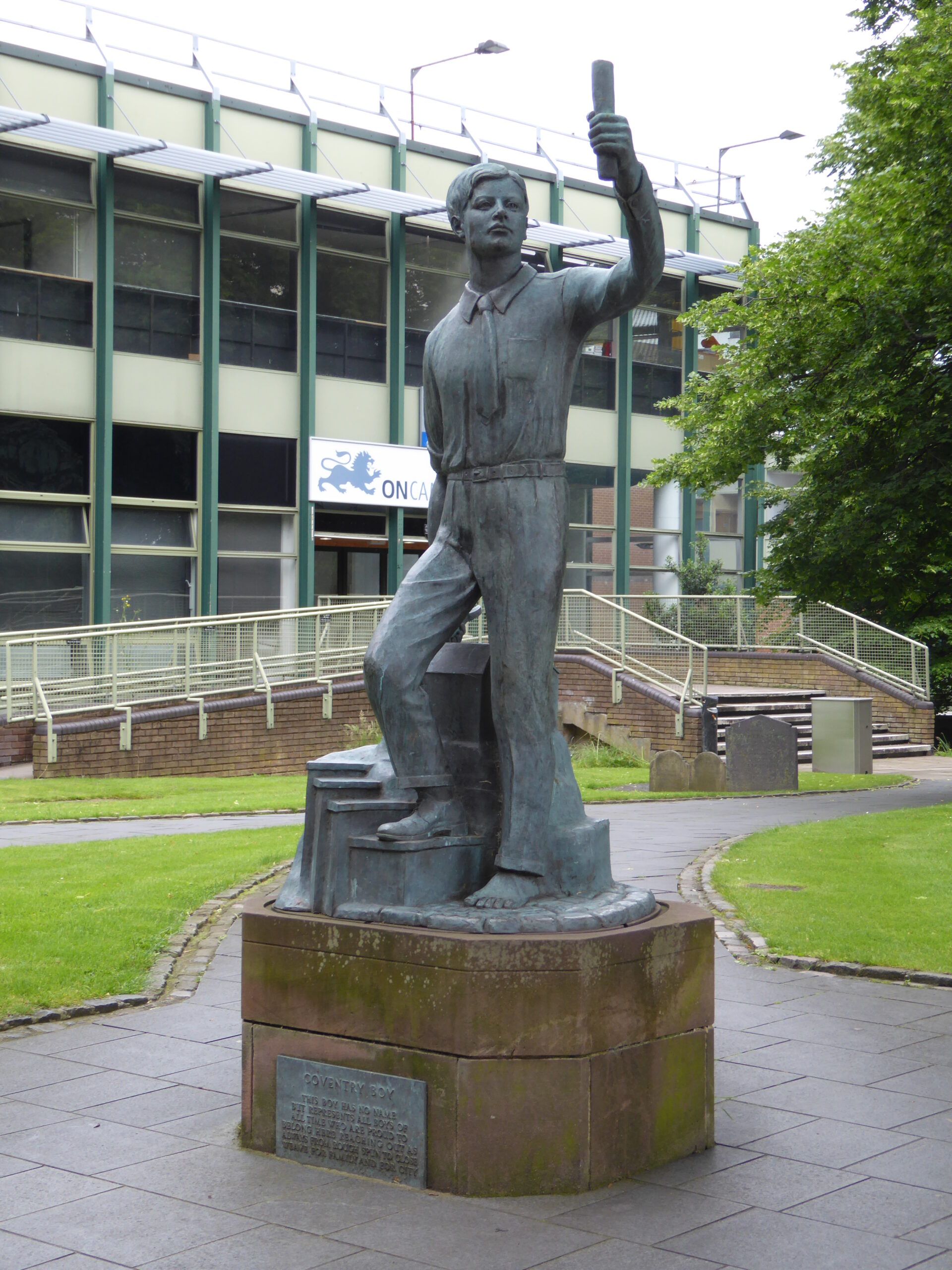
Coventry Boy Statue by Philip Bentham
In 1943, the newly appointed Bishop of Coventry, Dr. Neville Gorton, suggested the idea that Coventry, the great engineering city, should have a new Technological University. He was not alone, the Financial Times suggested that a new University with a scientific bias should be built – “at Coventry which might be described as the mechanical centre of England”. But the City Council were unreceptive at this time, relying on each engineering company training their own apprentices.

Across the road from the cathedral in Priory Street is the statue – ‘The Coventry Boy’ by Philip Bentham.
‘Coventry Boy, this boy has no name but represents all boys of all time who are proud to belong here reaching out as always from rough spun to close weave for family and for city’ The statue was made to reflect this important part of Coventry’s history and pride and was unveiled in 1966.
Philip Bentham was born in 1910. He studied at the Central School of Arts and Crafts and also at Kennington School of Woodworking. He began his work training with his father Percy George Bentham, also a artist, at his Fulham Road studio, London. His father died in 1936 at the age of 53. During the Second World War Philip joined the RAF, and spent three and a half years in a Japanese prisoner of war camp where conditions were very hard.
Phillip mainly did architectural sculptures in metal, wood or stone. One of his more famous works was the two aluminium figures for the Fortnum and Mason clock in Piccadilly, London, 1963.

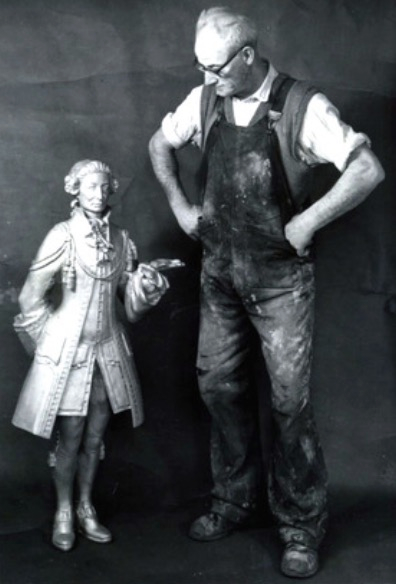
They are Aluminium for lightness as they move as part of the clocks display
‘The Coventry Boy’ by Philip Bentham is a model of a young man standing holding up a roll of paper in a heroic pose like a king or knight holding aloft a sword. But this is no ordinary piece of paper; this is his ‘Apprenticeship Certificate’. He has passed the City and Guilds Exam and now can become a member of the Coventry Freeman’s Guild; this is his ticket to a new and better way of life.
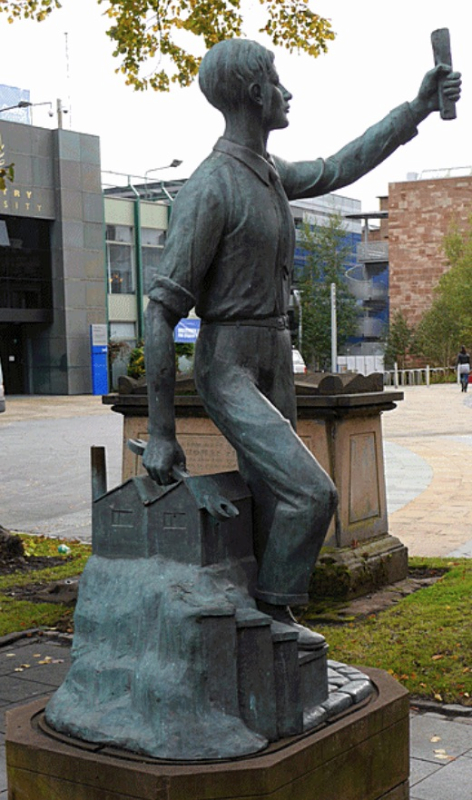
You will see on the statue he has only one shoe; this shows he came from a poor back ground but by entering and climbing the steps to success through learning an engineering trade he can hold his head high. You can tell he is an engineer because in his other hand he has a spanner which is embedded in the factory. You can see on his other foot he has a shoe, again to show he has bettered himself. He has a tie because he has reached the pinnacle of respectability and if he is a ‘Tool Maker’ he is the engineer everyone looks up to because he has learned how to make the tools that make the tools that industrial engineering is based on.
The ‘Coventry Boy’ was commissioned by the Coventry Boy Foundation, an anonymous group of local benefactors. It was the Morris Singer Foundry who suggested that Philip do the work. They first had a small model made in silver and given to the Lord Mayor of Coventry. Then later they had a larger scaled up version made and cast in bronze by the Morris Singer Foundry, Worthing. Philip had very close associations with the Foundry. On his only visit to his studio, also in Worthing, to discuss the Coventry Boy statue, Alfred Harris of the Coventry Boy Foundation saw the plaster sculpture of ‘Fishermen and Nymph’ which his father Percy George Bentham had made in 1922 for the royal Academy show. He liked it so much that he got the Foundry to cast it in bronze and then presented it to the City Council to be put on a small island in the lake at Coombe Abbey Country Park in 1968.
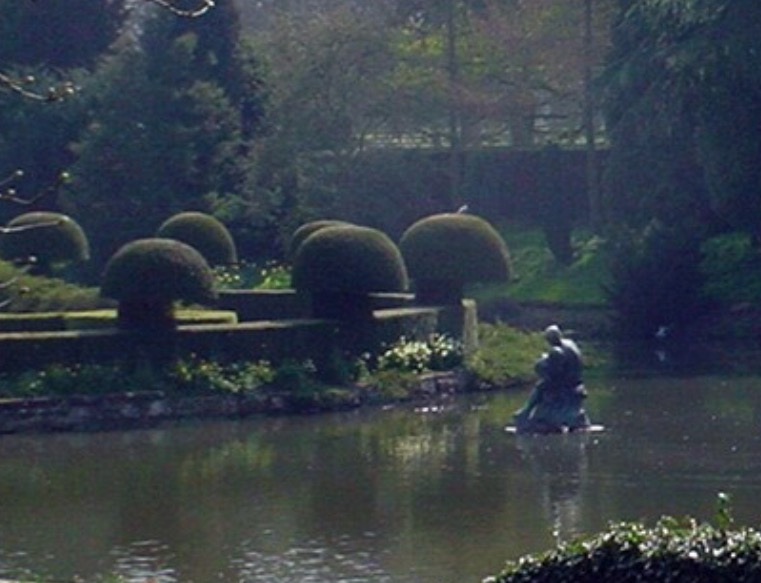
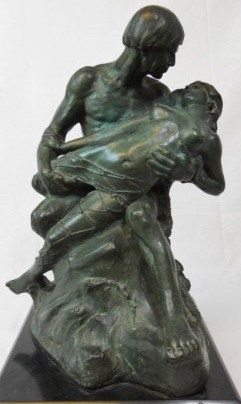
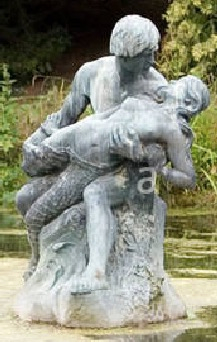
Philip Bentham was also asked by the Coventry Boy Foundation to carve some of the statues on the Coventry Cross along with Wilfred Dudeney & George Ford and the City Council commissioned George Wagstaff to design and make the pendants.
Philip did many different styles of artwork; this photograph of the ‘Gyroscope’ being one. Philip he died in 1981 aged 71.
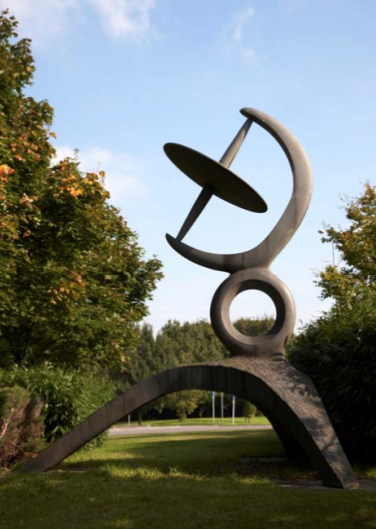
The ‘Coventry Boy’ statue it on ground that used to be the burial ground of St. Michael’s and is close to the site where the Triumph Cycle works was on both sided of Priory Street and the factory site ran right over to Cox Street Iit was very large factory site but most of it was distroyedt in the War. The rest of the area running between Priory Street, Jorden Well, Cox Street and the newly formed Fairfax Street was a mixture of bombed houses and factory units. This area was designated by the City Council to be a new ‘Leisure Zone’. The new City Centre planning idea was to create different zones such as the shopping zone which was the new Precinct shopping area. The ‘Leisure Zone would have all the things to do with modern leisure, which is why the first building to go up was the Herbert Art Gallery and Museum on the south side of the site and the new Swimming Baths at the north end of the site. The plan was the rest of the site would have other buildings like a concert hall, sport hall, formal parks and feature pools. But at the same time the Labour Government was promoting Education not just for children but for all to better themselves. The Government was offering money to any city that could quickly open up new ‘Polytechnic Colleges’. Coventry had a tradition of high level training of apprenticeships at the Coventry Technical College. So the Lanchester Polytechnic (named after Frederick Lanchester) was build on this site and opened in 1961, replacing many of the other leisure building planned. The new students of the new Polytechnic got to study full time, free and would be paid a grant to attend.
The Polytechnic became the Coventry University in 1992.
